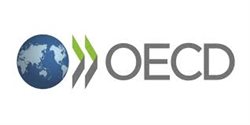 The Organisation for Economic Cooperation and Development provides access to 45 databases comprising over 400 statistical series from the 1960s to the present. 38 countries are members of the OECD. First time users should consult the Data Explorer Guide. The OECD also provides online access to all reports, working papers, ebooks and journals.
The Organisation for Economic Cooperation and Development provides access to 45 databases comprising over 400 statistical series from the 1960s to the present. 38 countries are members of the OECD. First time users should consult the Data Explorer Guide. The OECD also provides online access to all reports, working papers, ebooks and journals.
OECD data is also available via the EUI's Datastream subscription (useful for integrating with other data sources). Multi-lingual OECD resource guides are available here.
OECD statistical data can be exported to Excel, CSV, XML and other formats. Ready-made Excel tables of headline series are also available. The OECD Main Economic Indicators' theme- and country-tables are also available in multiple formats. The principal OECD statistical themes are:
- Main Economic Indicators
- International trade and commodities
- Education, science, technology and R&D
- Labour markets
- International direct investment / FDI
- National accounts
- Health
- Taxation
- Social expenditure
- Productivity
- Agriculture
- Pensions
- Globalisation indicators
- Telecommunications.
Access OECD data.
Access IEA data via this Library catalogue link to the OECD Data Explorer. When the landing page opens; go to 'Browse by Theme' > 'Energy'. IEA series range from the 1970s to present. Earlier coverage is available for some countries. Data are annual, quarterly and monthly. Principal IEA statistical themes include:
- CO2 emissions from fuel combustion
- Coal data
- Electricity data
- Energy prices and taxation
- Energy projections for IEA countries
- Energy technology R&D
- Forecasts
- Natural gas data
- Oil data
- Renewables data
- World energy statistics and balances.
The OECD Education Portal provides extensive, internationally comparable data on education policies and outcomes. There are three resource options:
- Analyse by country
- Explore data
- Review education policies.
The OECD Education Portal also provides main indicators from 'Education at a Glance.'
Trade in Value Added provides data on international trade, supply chains, component sourcing and global economic integration. TiVA uses a methodology designed by the OECD and the WTO to reflect the complexity of international production. Underlying observations are from the OECD Inter-Country Input-Output (ICIO) database.
The TiVA database covers 64 economies - including all OECD countries, EU member states and the G20. 16 manufacturing sectors and 14 service sectors are covered.
The OECD and WTO provide this list of indicators for TiVA:
- Domestic and foreign value added content of gross exports by exporting industry
- Services content of gross exports by exporting industry, by type of service and by value added
- Participation in global value chains (GVCs) via intermediate imports embodied in exports (backward linkages) and domestic value added in partners’ exports (forward linkages)
- ‘Global orientation’ of industrial activity; i.e. share of industry valued added that meets foreign final demand
- Origins of value added in final demand, by source country and source industry, including the origin of value added in final consumption (by households and government) and in gross fixed capital formation (investment by businesses)
- Bilateral trade relationships based on flows of value added embodied in domestic final demand
- Inter-regional and intra-regional relationships.
TiVA uses observations from the OECD Inter-Country Input-Output (ICIO) database, compiled from both national and international sources, and collated using official national accounts, by sectoral activity and main aggregates.
Data homepage
Contact: resdata@eui.eu
Page last updated on 19 June 2025